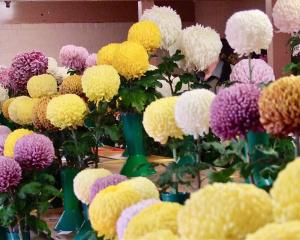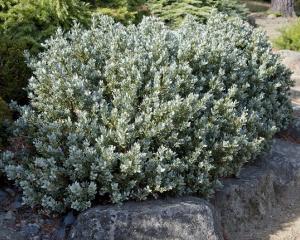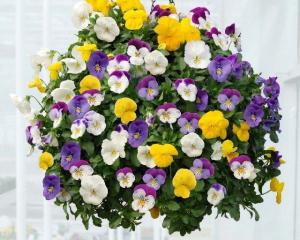As temperatures drop, weeds speed up their growth cycle, producing a crop of seeds in a surprisingly short time.
Remember the old saying "one year’s seeding, 10 years’ weeding" and keep the garden weeded. At the very least, cut flower heads off weeds and compost them. Do not leave flower heads on the ground as they will produce seeds in a last-ditch effort to take revenge on the gardener.
Onion seed can be sown now in shallow drill, 30cm apart. The small plants can stand over winter and mature next summer. Prepare the bed by digging in manure.
Garlic and shallots should be lifted on a dry day and stored. Tie the stems together and hang in a warm, dry spot.
"Waste not, want not", is another old saying, so thin turnips and spinach when the thinnings are big enough to cook.
Main crop potatoes should be dug.
Lift them on a fine day, leave the tubers exposed for a few hours to dry, then store in a single layer in shallow boxes lined with newspaper. Cover with paper and store in a dark, dry place.
In contrast, seed potatoes are stored exposed to light. Place in shallow trays with their eyes (embryo shoots) looking up. If you are saving your own potatoes to use as seed, choose egg-sized tubers from plants which produced heavy crops of good size.
Cabbages, swedes, turnips, curly kale, Chinese cabbage, broccoli and Brussels sprouts can be sprinkled with derris dust to protect them from white butterflies and other pests. Produced from a climbing plant from Asia, whose roots contain the poison rotenone, derris has low toxicity to humans and bees but should not be applied within two to three days of harvest.
Flowers
Continue to plant spring-flowering bulbs. Tulips need well-limed soil, while other bulbs should have it applied sparingly. Blood and bone and bonemeal are ideal fertilisers.
The Primula is a genus which includes polyanthus, primroses, cowslip (P. veris) and sweet-scented auriculas. Most of this group need constantly moist soil and some sun, although the fairy primrose (P. malacoides) needs part-shade and well-drained, gritty soil.
All members of the Primula family can be planted now and many will flower sporadically throughout a mild winter before coming into full bloom in spring.
Divide existing clumps and enrich the ground where they are to go with plenty of manure, a moderate application of lime and some blood and bone.
Plant lilies before the soil becomes too wet and cold for them to make their unseen but important growth through winter. Because they need well-drained soil, bulbs can be placed on gravel mixed with compost. Do not add lime.
In milder areas, fuchsias, geraniums and pelargoniums can be propagated outdoors from cuttings taken when pruning, but for most of the region this is better done in a greenhouse.
As the flowering season ends for tuberous begonias and the leaves turn yellow, gradually stop watering to help the corms ripen before winter. Keep them dry during the winter months, either in or out of their pots.
Indoor cyclamens showing flower buds can have a regular watering of liquid manure to encourage good-sized blooms. Water from the bottom and keep pots near light.
As the danger of frosts increases, chrysanthemums planted in pots can be brought indoors. Provide plenty of ventilation, water on warm days and apply liquid manure until the flowers appear.
Fruit
Strawberries can still be planted in a sunny spot. Apply superphosphate or bone dust to aid healthy growth.
Strawberries do best in moist soils with plenty of organic material and well-decayed leaf mould added.










